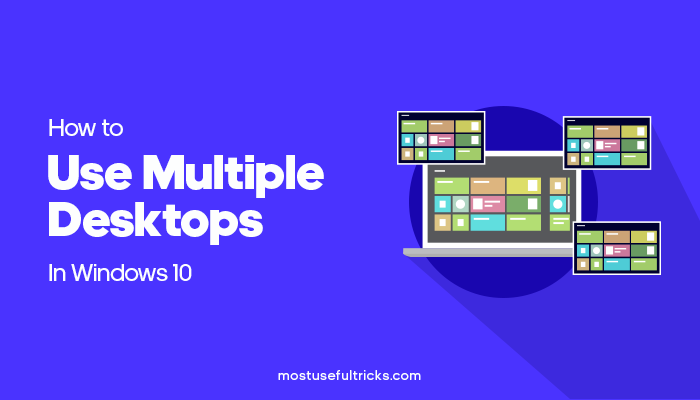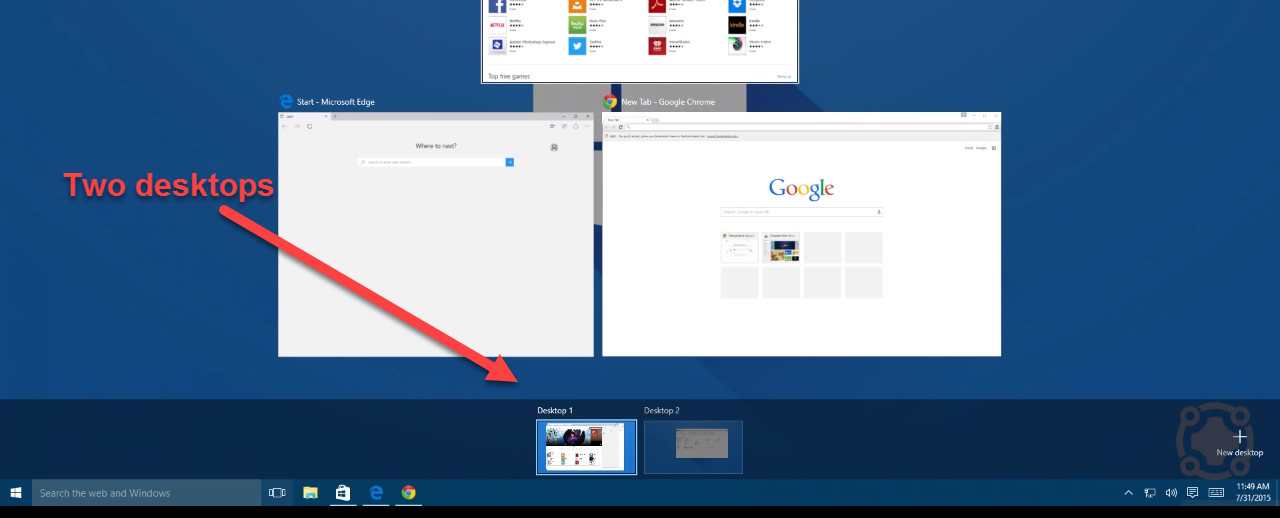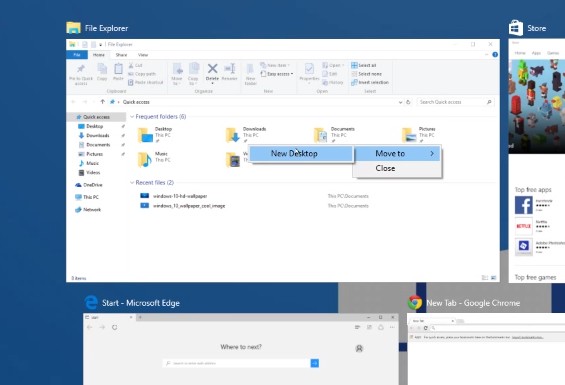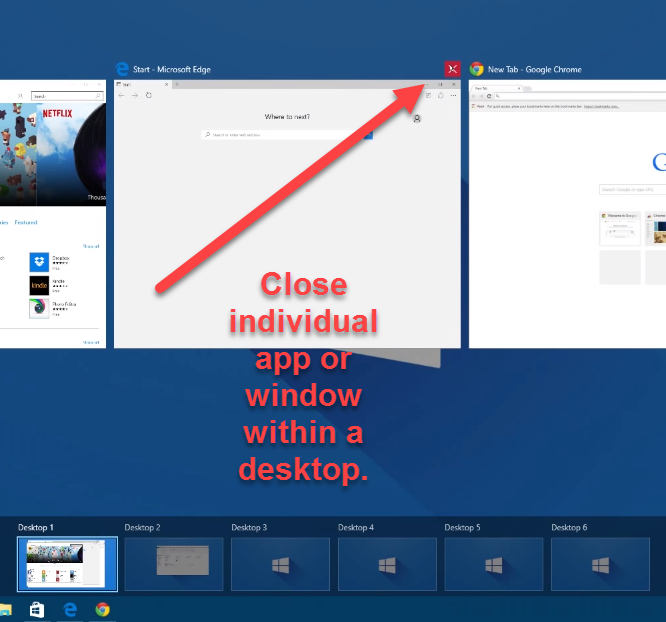Windows 10 is more than just the latest offering of Microsoft to all its users. It is intended to function as an all-around operating system for every computing purpose. The benefits of using multiple desktops Whether you’re an individual searching for a virtual desktop work solution/ virtual desktop or an organization endeavoring to change to cloud-based arrangements. And one of its priced functionalities is its ability to handle multitasking inside a single device. And speaking of multitasking, this article is all about how to use multiple of these.

The multiple desktops in Windows 10 are not a new concept. In fact, there have been some third-party apps that offered this kind of feature back in the Windows XP era.
This time, the Windows 10 platform feature is now converted as a native feature within the OS. And if you do not know how to access it or how it works, let this article be your guide.
In this post, we’ll explore:
How to Use Multiple Desktops in Windows 10
We give full credit to the Windows developers for integrating this function within the system core. Not only is it seamless, but it is also light on system resources. Let’s start.
Adding Desktops
- To add a new desktop, there are two ways to do this. You may press the Windows button on the keyboard and the Tab button or click on the Task View button on Taskbar.

- If you have active windows or folders, you should see all of them arranged side by side on the screen.
- On the lowest left corner, just on top of the clock, you will find a new Desktop button. Click on it, and you will see two of those appearing just right on top of the Taskbar.


- You can add more, as much as you want, or better yet, just as much as your system can handle. That’s how Windows 10 multiple features work.
Transfer Apps to Another Desktop
- If you want an app or folder to transfer to a new one, the process is similar. Press the Windows button on the keyboard and the Tab button, or click on the Task View button on the Taskbar.

- You should see all the active apps and folders appearing side by side on the screen (bottom right corner).
- Hover to the app that you want to transfer to another.
- Right-click on the active apps to show the Move To button.

- Point your mouse on Move To button to show the New Desktop button.
- Click on the New Desktop button, and the active app will instantly create that, and the app will transfer to it.
- If you have already created it, you have to drag the active app or folder below and choose which one you want it to transfer.
Switching Between Desktops
Switching between virtual desktops is easy. There are two ways to do this. You may choose to click the Task View button and hover the mouse cursor to the one that you want. Or you can press the Windows key + CTRL + Left arrow or Windows key + CTRL + Right arrow keys on the keyboard.
Personally, I prefer the shortcut key combination because it is much swifter and feels more spontaneous, especially when you already get the hang of it. Moreover, this feature has been integrated properly that it could add more efficiency to your work.
Close a Desktop

If you want to close a virtual desktop from the multiple ones you launched, all you have to do is hover the mouse cursor to a desktop. The ‘X’ red button will instantly appear. Click on it to close the desktop. You can do this for all the active ones that you left open.
Close an Active Window on a Desktop
- Closing a window inside an active desktop is pretty much the same. All you have to do is hover over one with the active app or active folder you want to close.
- Once the mouse cursor touches it, all its active windows will show up.
- Now point the mouse cursor on the active window, app, or folder until the ‘X’ button appears.
- 4. Click on the ‘X’ button to close the app or folder.

Things to Remember
If you have 2GB of RAM in your system, it would be best to stay at two max. If you have more RAM, then you may add more.
The ideal and recommended amount of RAM as a system requirement should be around 8GB and more. With that amount of RAM, you can have better multitasking responses and fewer chances for lag. Remember that the minimum multiple desktop requirement for RAM is 4GB.
You should also be aware of how much power your processor can handle. For example, if you are handling or dealing with more media content, adding more of this might put a lot of strain on your CPU.
But if you are aware that you have a pretty powerful machine, you can have more freedom. It will be just at your discretion when it comes to the number that you want to open.
Check more articles from this blog, Add IDM Extension in Chrome (Step By Step Guide), 2 Ways To Disable Windows 10 Automatic Updates.
FAQ
>To add a new desktop, there are two ways to do this. You may press the Windows button on the keyboard and the Tab button or click on the Task View button on Windows 10 Taskbar.
>Now, if you have active windows or folders, you should see all of them arranged side by side on the screen.
>On the lowest left corner, just on top of the clock, you will find a new button named New Desktop. Click on it, and you will see two of those appearing just right on top of the Taskbar.
>You can add more, as much as you want, or better yet, just as much as your system can handle. That’s how Windows 10 multiple features work.
This feature is probably one of the best features that came across the Windows OS. It provides a more organized space when working on multiple tasks of a different nature. In addition, it makes the screen a lot cleaner and less cluttered.
Switching between desktops is easy. There are two ways to do this. First, you may choose to click the Task View button and hover the mouse cursor to the one that you want. Or you can press the Windows key + CTRL + Left arrow or Windows key + CTRL + Right arrow keys on the keyboard.
In Conclusion
The multiple desktops feature in Windows 10 is probably one of the best features across the Windows OS. It provides a more organized space when working on multiple tasks of a different nature. In addition, it makes the screen a lot cleaner and less cluttered.
In today’s question, what other features that you think are useful in Windows 10? Please tell us what you think in the comment section below. We would like to hear your thoughts and ideas.
Ask us about keyboard shortcuts windows, windows between desktops, Additional desktop, original desktop/alternate desktop, program windows, Arrow keyboard shortcut/tab shortcut, Virtual desktop keyboard, desktop keyboard shortcuts, or anything from the article.
Feel free to leave questions and suggestions down below. Your idea might be the next topic that we will discuss. And don’t forget to share this article if this is helpful to you. We appreciate little gestures such as that.
Is there a way to obtain different desktop background image for each desktop (like in OS)?
For me, the more I use Windows and Linux my better, I feel less comfortable with using XUL than when I used Ubuntu. For now, I use my own Ubuntu desktop, but I don’t feel comfortable with all of the other options for my own development.
At work, I use the Chromebook Air as my primary desktop (plus the laptop) for the web and for the desktop (plus my desktop), and on my laptop (+ desktop in laptop mode), I don’t need the whole app.
Windows has had to change to Linux to be a viable replacement for IE. As I mentioned in this article, they have a lot more options than just using a Linux system and using a Linux laptop.